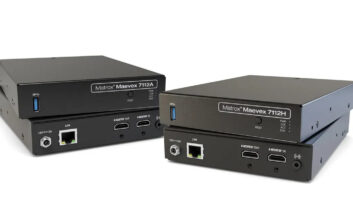Earlier this month, Bitmovin announced the introduction of Smart Chunking into its VoD Encoder, which it describes as an evolution of the split and stitch algorithm.
The original algorithm was created in response to problems with how long it takes to encode a file on a single machine. Split and stitch allows the encoding job to be split into multiple parallel encodings or segments, accelerating the entire process.
“However, split and stitch can also lead to potential quality drops when using fixed GOPs and segments, degrading the overall visual quality for viewers,” Bitmovin’s senior product manager, Markus Hafellner tells TVBEurope.
“Smart Chunking optimises chunk lengths and bitrate distribution, which positively impacts the visual quality throughout the whole asset and achieves this faster than before.”
The introduction of Smart Chunking means that video streaming companies will be able to deliver their streams in the best possible quality, adds Hafellner.
“The split and stitch algorithm was a significant advancement in video encoding because it made it possible to horizontally scale the compute intense workload,” he continues. “However, we saw an opportunity to build on it and further improve the visual quality of video content, and we have the data to back this up.
Currently, video quality is measured with VMAF, an objective quality metric created by Netflix, and it’s one of the most widely used metrics in the video streaming industry to benchmark video quality. “We used VMAF when benchmarking the image quality of a highly complex video asset processed with the standard split and stitch approach compared to Smart Chunking,” explains Hafellner.
“The results showed the lowest quality 1 per cent frames increased by 6 VMAF points (6 VMAF is exactly the noticeable difference for the human eye). There was also an impressive 22 VMAF points increase in the lowest quality 0.1 per cent frames, and the worst frame saw an increase of an astonishing 60 VMAF points.”
For audiences, this means that the visual quality of their favourite content will look even better than before. Hafellner adds that Bitmovin’s data shows a noticeable increase in visual quality that’s perceptible to the human eye when Smart Chunking is used compared to the legacy split and stitch algorithm.
The technology has been developed for VoD services, but Bitmovin hasn’t ruled out applying to live content. “However, the shown quality gains would affect latency which then becomes a limiting factor for the optimisations,” he adds.
“Smart Chunking is paving the way for us to develop Per-Shot Encoding and make it available to our customers. Per-Shot Encoding aligns segment boundaries and thus I-frames with shot boundaries, which reduces the bitrate while maintaining the same visual quality.”







